Last updated on October 6th, 2024
Featured image: Accessible travel has made great improvements, but there is still more work to be done | Photo by Neirfy007 on Envato
What can the travel industry do to improve accessibility and inclusion?
by Tanzila Khan
Whether on wheels or feet, travelling is the most beautiful way to experience the beauty of this world, see cultures and places, meet people and try different activities. As a wheelchair user and a travel blogger from Pakistan, I have traveled to more than 20 countries and have experienced grassroot challenges of travelling in a wheelchair.
I often see lists titled “The Best Destination for Accessible Travel”. These rank places, hotels, airlines and activities as being wheelchair accessible with ramps and elevators. There are two problems with these studies. The first is that the actual people with disabilities living in that city are not consulted, quoted or considered when data is published. This is misleading and creates a delusion of accessibility.
The second problem is that these lists don’t take into consideration the culture, people or history of that destination. For example, in the USA, one can find an accessible parking spot or a wheelchair-accessible bathroom in any building. In India, however, this may not be the case, so it ranks lower. However, in India, a dozen people will stop by to provide any support or help a wheelchair user might need, to the extent of opening their houses for hospitality. Which place, then is more accessible from the disabled person’s point of view?
We all know that there’s more to travelling than airlines, hotels and activities. The travel experience is defined by the destination’s culture, spirit and essence. I always look forward to connecting with a place through the people. The travel industry needs to understand the root of the stigma of disability or the cultural reaction towards it and can position itself by aligning with it. For example, the top priority of a person with a disability travelling alone is not an accessible hotel. More importantly, it is the sense of safety we feel from the staff. Total accessibility cannot be guaranteed but human intervention for safety, comfort and empathy is a must to make any destination truly accessible.
The best destinations for accessible travel
The number one question I am asked is, ‘Which is the most accessible place in the world?’
My answer: ‘It’s where you are sitting right now.’
Travelling with a disability is an entirely different ball game. For me, it’s an extra layer of adventure because disability is perceived very differently in many parts of the world. Some examples are the transportation system, where taxi drivers are not sensitized or understand disability and are more likely to be rude to passengers with a disability as they drive them to the ‘accessible’ hotel as mentioned by one of these ‘accessible destinations’ lists.
At the same time, elevators may be present but small or broken. Even the definition of accessibility varies from country to country. In the USA, a destination would be accessible with wide bathroom doors, elevators and shallow ramps. In Pakistan, accessibility means four people have been arranged to carry the wheelchair to any floor.
So, the question comes down to who decides what is accessible and what is not? An entire destination is definitely not fully accessible. There can be certain areas or aspects and it’s important that data published in these studies is transparent and authentic, rather than PR gimmicks for marketing.
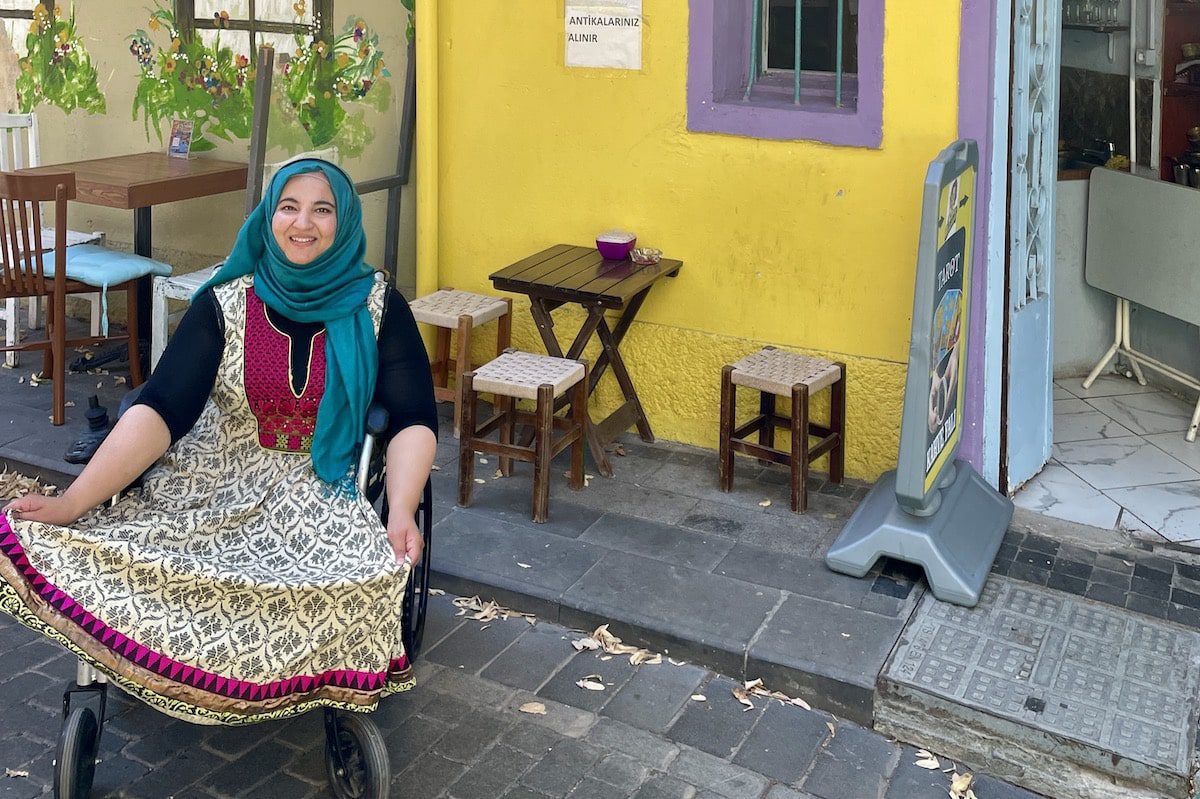
Tanzila during her visit to Istanbul / Photo provided by Tanzila Khan
What needs to change in the industry to improve accessible travel
There is a growing demand for inclusivity in the travel space, with evolving technology and the increasing number of people who require additional assistance. Here are seven suggestions that can guide the travel industry toward achieving a higher level of inclusion and improving accessible travel.
1. People-First Approach
No matter how much accessibility a hotel or a building has – if the people of that building lack empathy, then accessibility will be of no use.
For example, many hotels show the availability of larger rooms that are not designed for PWDs (people with disabilities) but can accommodate them. These rooms cost more than a regular room and wheelchair users are forced to pay this extra cost. This is a huge loophole where travellers with a disability feel discriminated against even by bigger chains of hotels where accessibility is available but empathy is not.
2. Nuanced Leadership
Accessibility will not always be available as we travel to smaller towns and villages or opt for unique experiences. But in many cases, the community steps in to support and open up as many options as possible.
For example, while in Mexico, a hot air balloon ride was not accessible as my wheelchair could not fit through the door of the balloon. However, the management went beyond the language barrier to design a solution of putting a chair inside on top of two crates for me to enter the basket. This experience is unique and true to the spirit of inclusion where nuanced leadership saved the day.
This leadership gives more security to a traveller with a disability. It also comes from the cultural beliefs of the destination and how they view a person with a disability beyond any policy, law or even the Convention on the Rights of Persons with Disability.
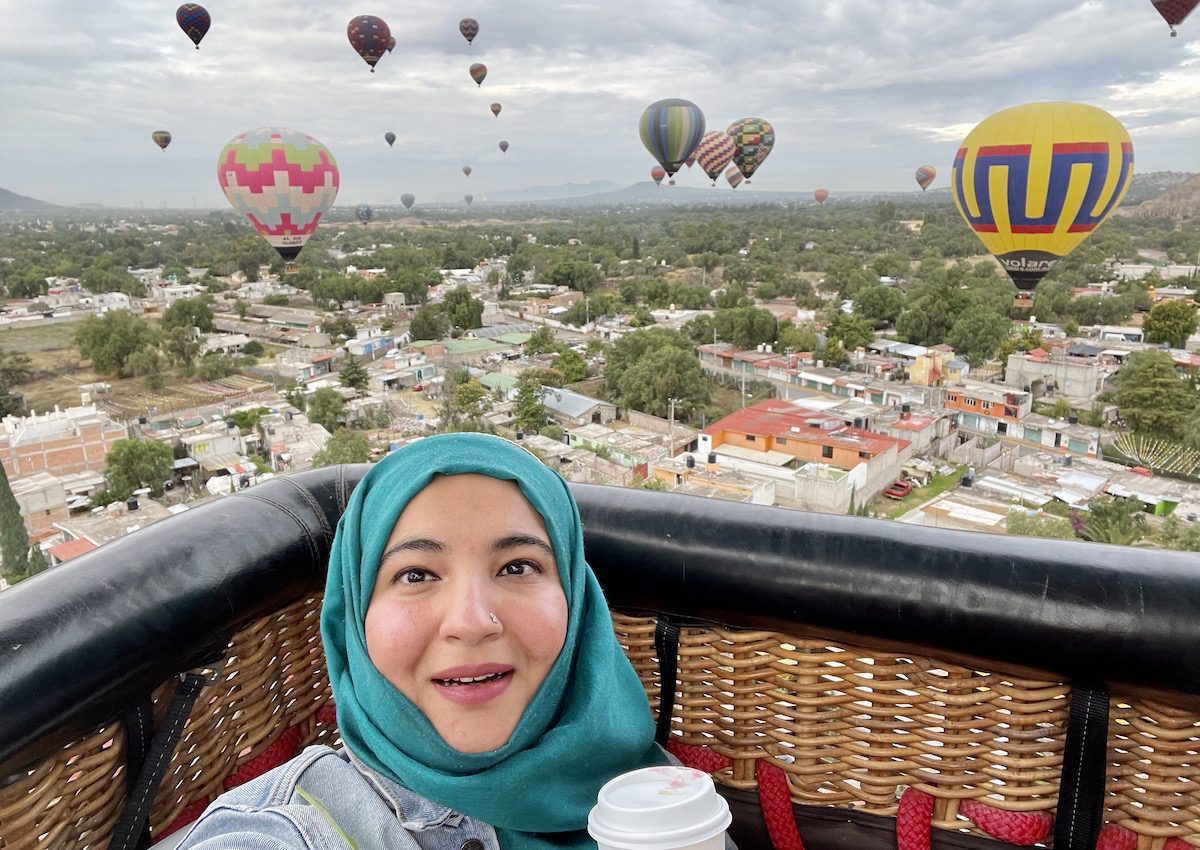
3. Building knowledge on disability culture
Understanding the experiences of people with disabilities is crucial to developing an inclusive travel environment. Not every traveller with a disability comes with an attendant and most travellers enjoy their independence. The travel industry needs to invest in training and education that builds knowledge about disability culture. This includes educating staff on different types of disabilities—visible and invisible—and how to communicate and assist travellers effectively.
For example, front-line employees, such as customer service agents and flight attendants, should be trained to respond sensitively to a range of needs, from physical assistance to the sensory requirements of neurodivergent individuals. Familiarity with accessible technology, such as text-to-speech applications and hearing assistance devices, should also be part of this knowledge-building effort.
4. Local-First Approach
Incorporating local perspectives and expertise into travel planning can significantly improve accessibility. Local insights allow for a more grounded understanding of specific community needs and the unique barriers faced by travellers with disabilities. By involving local stakeholders, the travel industry can better design services and infrastructures that address local challenges and cultural sensitivities.
For example, hotels and transportation services in tourist destinations can work with local disability advocacy groups and activists to ensure their offerings align with both international accessibility standards and the particular needs of local and visiting travellers with disabilities.
5. Widespread Misinformation
One of the biggest barriers to inclusion is the persistent misinformation surrounding disability. Many service providers and travellers lack a clear understanding of what constitutes accessible travel, leading to inadequate services. Misinformation about what people with disabilities can or cannot do often results in well-intentioned but misguided policies. The travel industry must actively combat these misconceptions through accurate information dissemination and training.
For instance, ensuring that marketing materials, travel guides, and online booking platforms offer detailed, accurate information about accessibility features will help travellers make informed decisions. Likewise, standardizing language about disability and access across the industry will minimize confusion and enhance clarity.
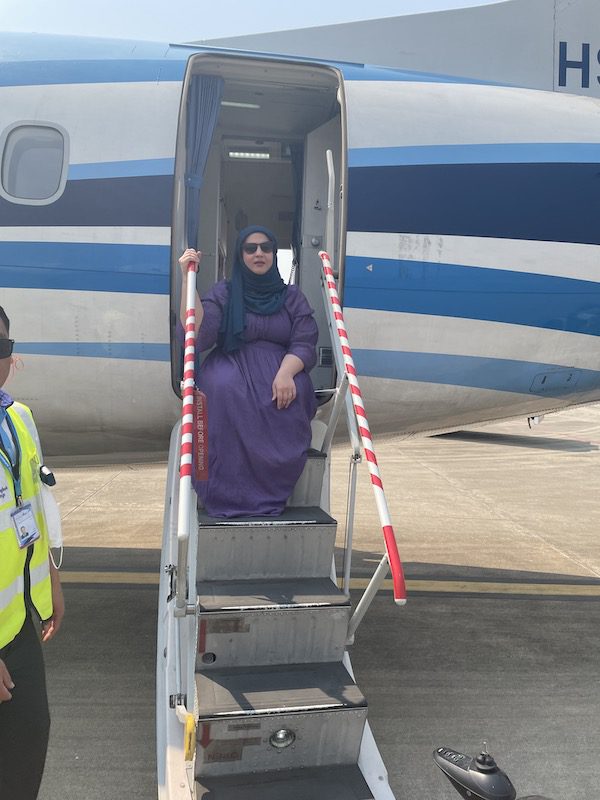
Landing in Luang Prabang with no aisle wheelchair / Photo provided by Tanzila Khan
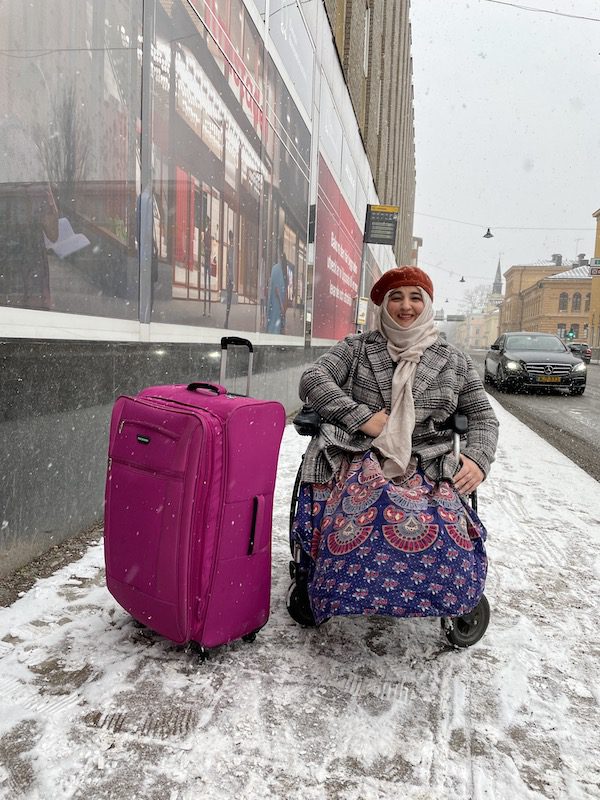
All set for her flight to Riyadh, Saudi Arabia / Photo provided by Tanzila Khan
6. Auditing for Accessibility
I have been in buildings marked as accessible but with broken elevators. An essential step toward inclusion is conducting regular accessibility audits across all travel touchpoints—from airport facilities to in-flight services and hotel accommodations. Accessibility audits assess the existing infrastructure and identify gaps that need to be addressed. By performing consistent audits, travel companies can ensure that their services align with global accessibility standards and continuously improve their offerings based on feedback from travellers with disabilities.
7. Hire Persons with Disabilities (PWDs)
One of the most effective ways to foster inclusion in the travel industry is to hire persons with disabilities (PWDs). When companies include PWDs in their workforce, they benefit from their lived experiences and unique perspectives. This helps the industry better understand the needs of disabled travellers and promotes authentic, inclusive practices.
From consulting roles to front-line staff, having PWDs in positions of influence will naturally push the industry to create better accessibility solutions. Moreover, representation matters—PWDs in visible roles help challenge societal stereotypes and demonstrate the value of inclusive employment practices.
Creating a truly inclusive travel industry requires a multifaceted approach that addresses the diverse needs of travellers with disabilities. By prioritizing a people-first mindset, fostering nuanced leadership, investing in knowledge building, and emphasizing local input, the travel industry can remove barriers and provide accessible and enjoyable experiences for all. Combating misinformation, conducting regular accessibility audits, and hiring PWDs will further ensure the industry evolves toward genuine inclusion. Now is the time for the travel industry to embrace the diversity of its travellers and pave the way for a more inclusive future and improved accessible travel.
More on Accessible Travel
Making International Headlines: Can Three Women Travel Solo in Wheelchairs to Egypt?
When three women travel to Egypt in a wheelchair, it’s not just about breaking stereotypes about disabilities but also a test of our friendship and support for each other.
Accessible Adventures in Albania: An Off-Season Road Trip is Full of Surprises
A off-season road trip through the southern part of Albania showcases stunning coastal villages, ancient ruins, and picturesque landscapes
Destin, Florida, an Undiscovered Gem on the “Emerald Coast”
Located on Florida’s west coast, Destin has evolved from a sleepy fishing village to a safe, accessible place for older women to enjoy white sand beaches and an active lifestyle.

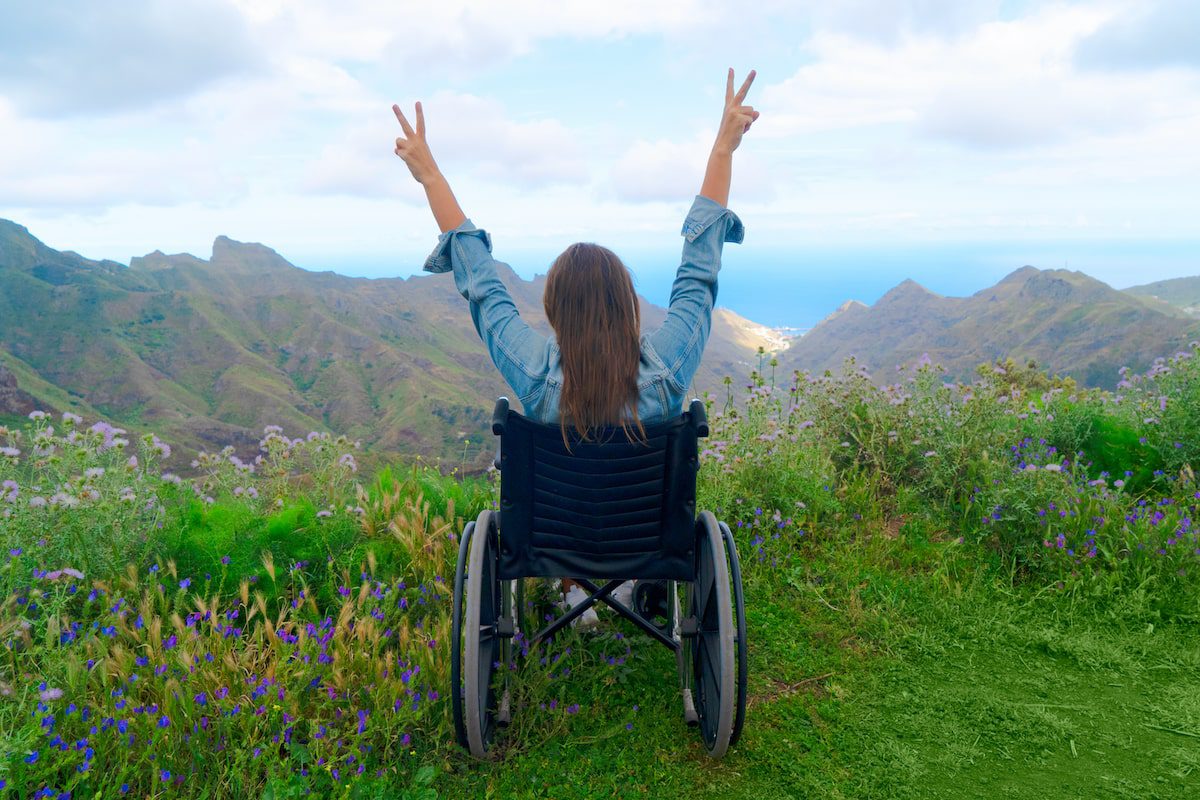


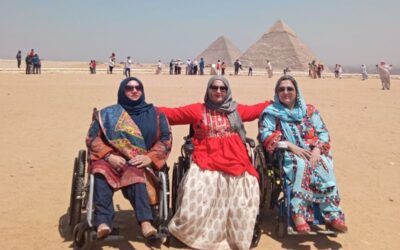
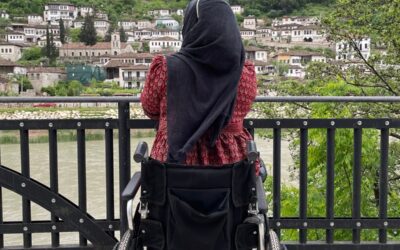
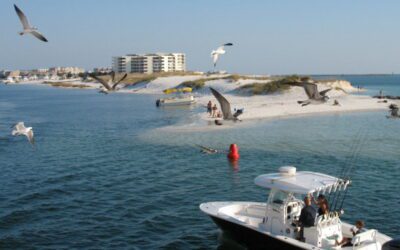
Hi Tanzila, this is a fantastic article and you are Wonder WOMAN. I completely resonate with you while reading your article . I’m from Kenya, East Africa and a safari planner,
I fractured my leg a year ago and have had two surgeries and am on the mend. I was on a wheelchair for months. However l was invited to go on safari to Maasai Mara famous for its black-maned lions and big game, birdlife and stunning landscapes.
It was beyond my expectation. I was hesitant at first to accept but everybody – from the lodge owner, the safari driver, the local airline went beyomd the call of duty.
Since then, l have been on several more and with the same result.
Like you said, where would you be more comfortable? It’s where people are really caring. In my case even though at the time l was in a wheelchair, the camp staff sat me in a chair and lifted me up and carefully sat me in the safari car – and the same when disembarking.
The airline has a special chair to carry you up a few steps into the small aircraft.
I’m now walking witha wheeler and even when l go shopping, everyon from the taxi driver to shop attendants are sp helpful and caring – nd yet they owe me nothing.
The kindness of our people is – l’m left in awe.
Amen to this! Accessibility is more than just ramps and elevators, it’s about empathy and cultural understanding. Couldn’t agree more with the need for human connection and authentic inclusion in travel. This is a powerful post, thank you so much. Hugs!